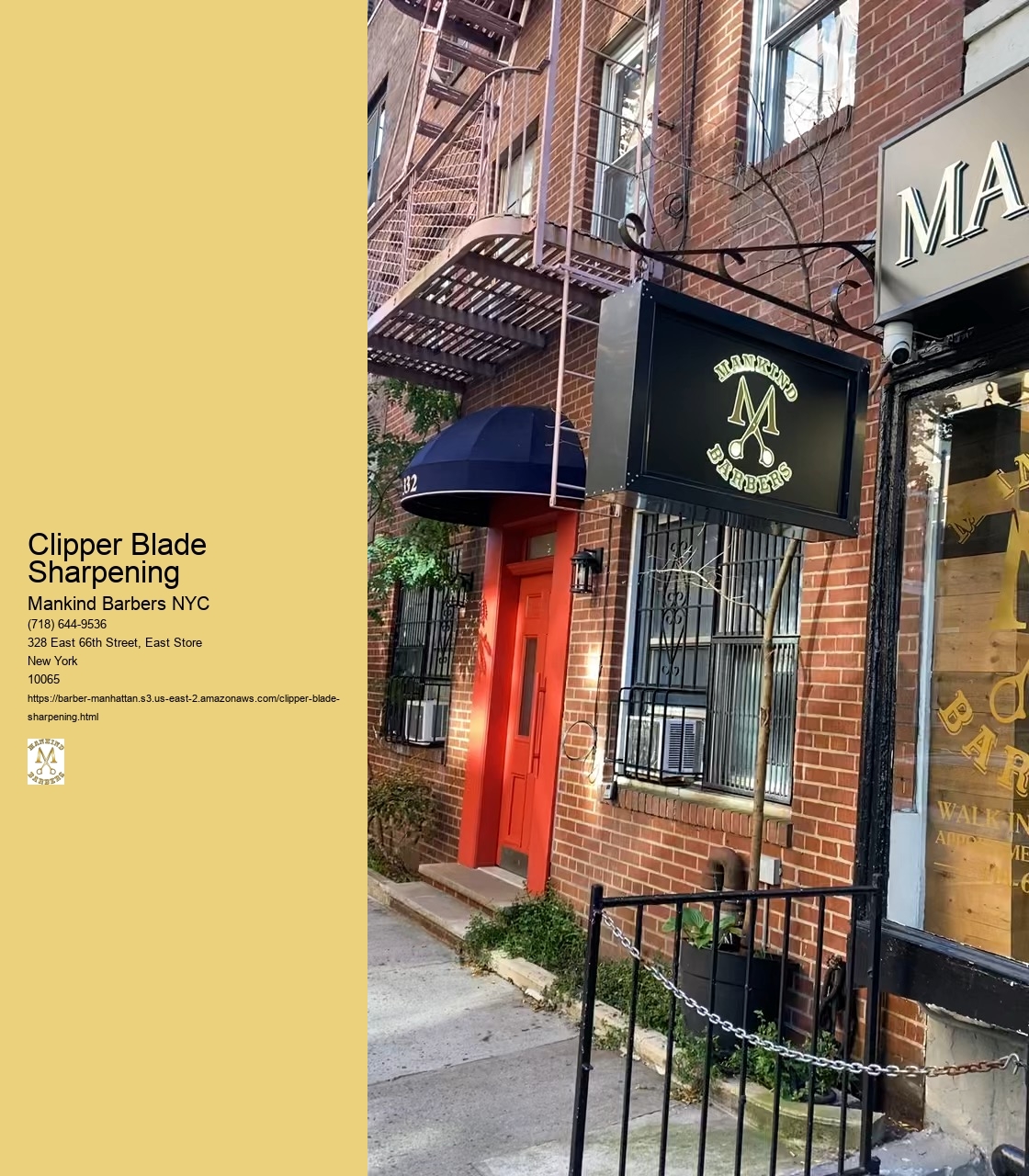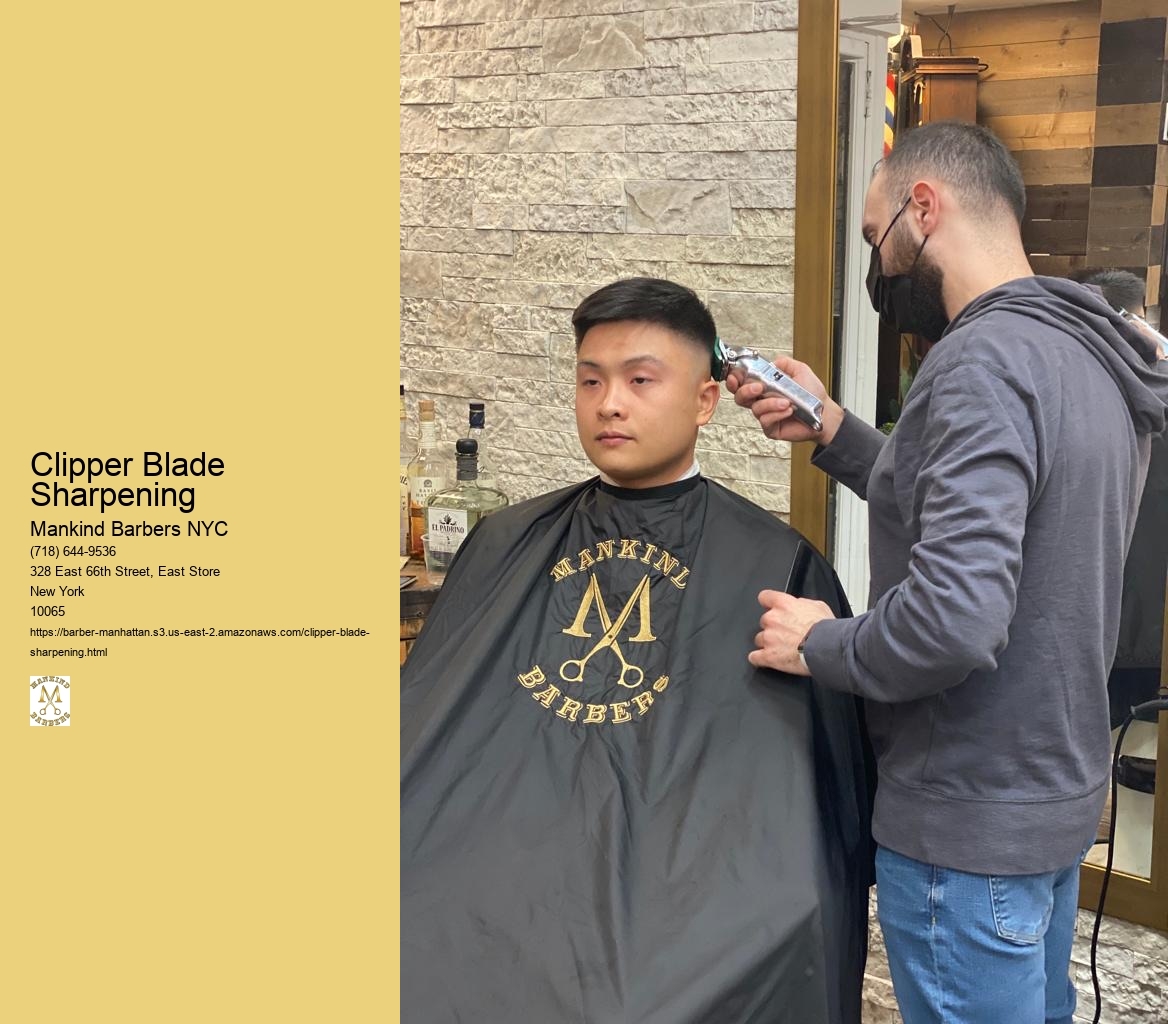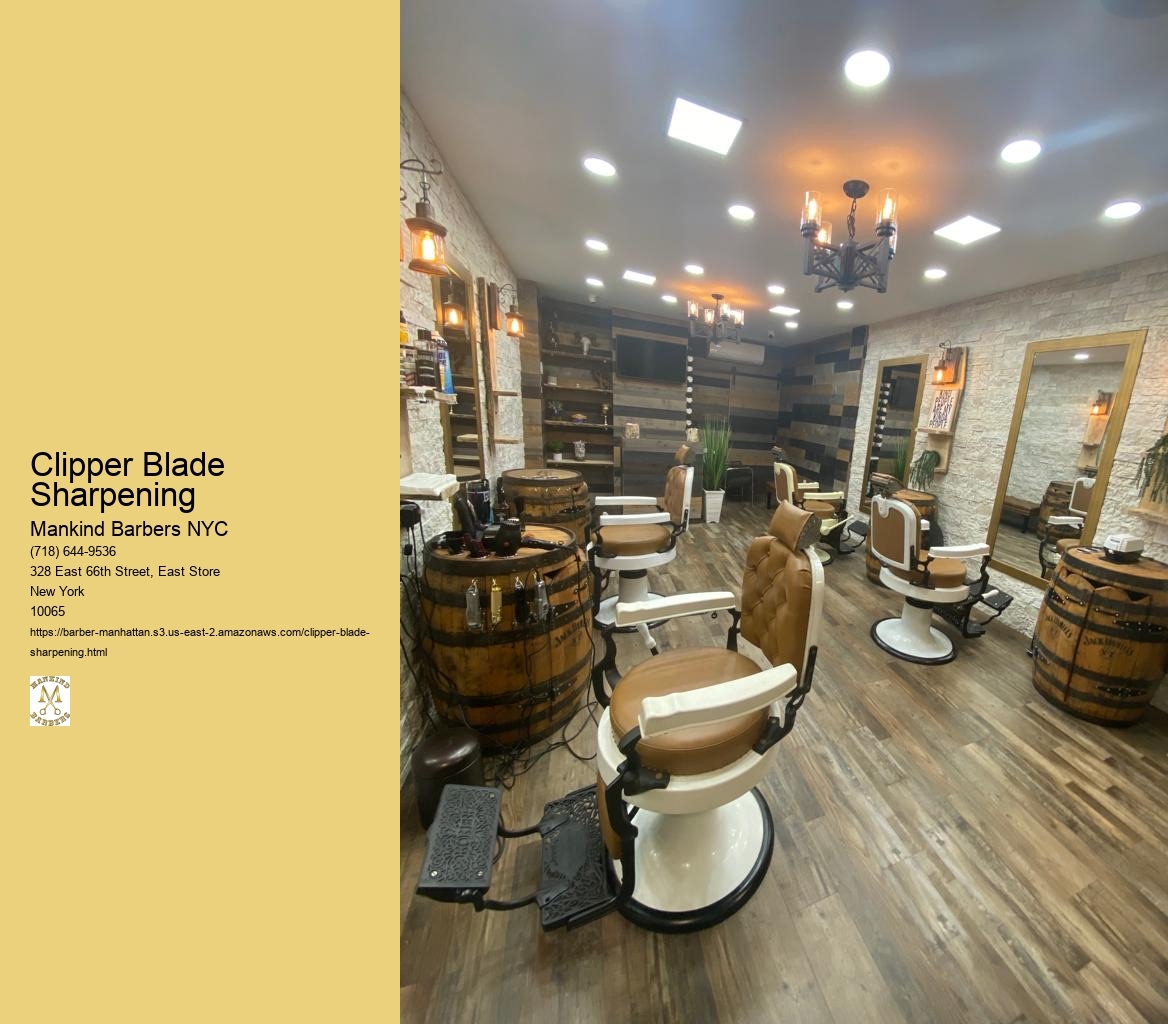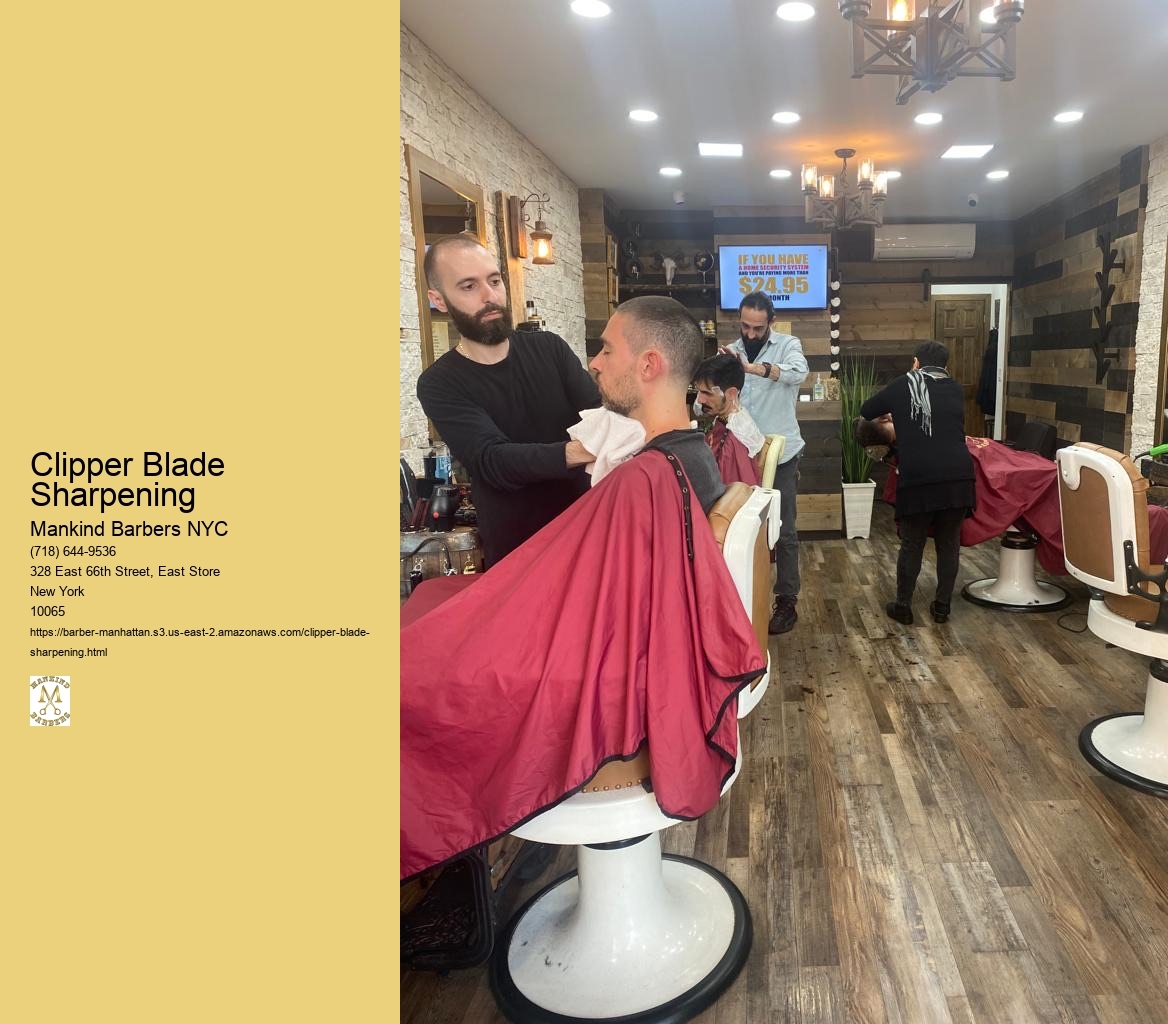

The best methods for sharpening clipper blades at home involve using specialized sharpening tools designed for this purpose. One popular method is using a clipper blade sharpening stone, which allows for precise sharpening of the blade edges. Another method is using a clipper blade sharpening machine, which automates the sharpening process and ensures consistent results. It's important to follow the manufacturer's guidelines and instructions when sharpening clipper blades at home to ensure safety and effectiveness.
Clipper blades can typically be sharpened multiple times before needing replacement, depending on the extent of wear and tear. Regular maintenance and proper sharpening techniques can prolong the lifespan of clipper blades. Hair Vitamins and Supplements for Men However, it's essential to monitor the condition of the blades and replace them when they no longer provide the desired cutting performance, even after sharpening.
Signs that indicate clipper blades need sharpening include decreased cutting efficiency, uneven cutting, snagging or pulling of hair, and an increase in grooming time. Dull clipper blades can also cause discomfort or irritation to the pet's skin due to tugging or pulling of hair. Hair Powder for Men Regular inspection of the blades for signs of wear and testing their cutting performance can help identify when sharpening is necessary.

When it comes to DIY clipper blade sharpening, specific tools and kits are recommended to ensure optimal results. These may include clipper blade sharpening stones, sharpening oil, a clipper blade sharpening machine, and a blade balancing tool. Using the right tools and following proper sharpening techniques is crucial for maintaining the sharpness and performance of clipper blades.
Hair Repair and Strengthening Treatments for MenProfessional groomers and pet owners should sharpen their clipper blades regularly to maintain optimal cutting performance. The frequency of sharpening depends on the usage and the type of blades being used. Conditioner for Men For heavy usage, such as in a professional grooming setting, blades may need to be sharpened more frequently, while occasional home use may require less frequent sharpening.

Potential risks and mistakes to avoid when sharpening clipper blades include using improper sharpening techniques, applying too much pressure during sharpening, and neglecting to properly clean and lubricate the blades. These can result in uneven sharpening, damage to the blade edges, or reduced blade lifespan. It's important to follow the manufacturer's guidelines and seek professional advice if unsure about the sharpening process.
Beard Oil and Balm for MenDifferent types of clipper blades, such as ceramic or steel, may require different techniques for sharpening. Ceramic blades, for example, are harder and may require specialized sharpening tools designed specifically for ceramic materials. Steel blades, on the other hand, may be sharpened using traditional sharpening methods. Understanding the specific requirements of different blade materials and using appropriate sharpening techniques is essential for maintaining the quality and longevity of clipper blades.

When selecting a lightweight hair gel for men with a modern quiff, it's essential to consider products that offer a strong hold without weighing down the hair. Look for gels specifically formulated for men's hair that provide a flexible hold, allowing for easy styling and manipulation. Opt for gels with a matte finish to achieve a modern, textured look. Consider products that contain ingredients such as aloe vera, bamboo extract, or vitamin E, as these can help nourish and strengthen the hair while providing the desired hold. Additionally, seek out gels that are water-based and alcohol-free to avoid excessive drying or flaking. It's also beneficial to choose a gel that offers humidity resistance to maintain the quiff's shape throughout the day. By considering these factors, men can find a lightweight hair gel that complements their modern quiff hairstyle.
When selecting a hair serum for men with chemically treated hair, it is essential to consider products that are specifically formulated for chemically treated hair. Look for serums that are designed to address the unique needs of chemically treated hair, such as repairing damage, providing moisture, and protecting against further damage. Seek out serums that contain ingredients like keratin, argan oil, coconut oil, and vitamin E, as these can help nourish and strengthen chemically treated hair. Additionally, opt for serums that are free from harsh chemicals and sulfates to prevent further damage to the hair. It's also beneficial to choose a serum that offers heat protection, as heat styling can exacerbate damage to chemically treated hair. By selecting a serum tailored to the specific needs of chemically treated hair, men can help maintain the health and appearance of their hair.
Certainly! For men dealing with product buildup, it's essential to opt for a clarifying shampoo that effectively removes residue without stripping the hair of its natural oils. Look for shampoos containing ingredients such as salicylic acid, tea tree oil, or activated charcoal, as these are known for their ability to deeply cleanse the scalp and hair. Additionally, seek out formulations that mention "deep cleansing," "purifying," or "detoxifying" on the label, as these indicate a focus on removing buildup. Some popular options for men's clarifying shampoos include those designed for oily hair, dandruff control, or post-workout cleansing, as these are often formulated to address excess product accumulation. It's also beneficial to follow up with a moisturizing conditioner to restore hydration after using a clarifying shampoo.
When it comes to finding the best deep conditioners for men with damaged hair, it's important to look for products that are specifically formulated to address the unique needs of men's hair. Look for deep conditioners that contain ingredients such as keratin, argan oil, shea butter, and vitamin E, as these can help to nourish and repair damaged hair. Additionally, products that are designed to strengthen and hydrate the hair, while also providing protection against further damage, can be particularly beneficial. Some popular options for men's deep conditioners include those that are targeted towards repairing and revitalizing dry, brittle, or chemically treated hair. It's also worth considering deep conditioners that offer heat protection, as this can be especially beneficial for men who frequently use styling tools. By choosing a deep conditioner that addresses these specific needs, men can help to restore their hair's health and vitality.
Yes, there are specialized hair sprays designed specifically for men that offer humidity control. These products are formulated to combat the effects of humidity on men's hair, providing long-lasting hold and frizz control. They often contain ingredients such as polymers, resins, and anti-humidity agents to create a protective barrier against moisture and environmental factors. Additionally, some of these hair sprays may also include nourishing ingredients to help maintain the health and strength of the hair while providing style and control. Men's humidity control hair sprays are tailored to address the unique needs of men's hair, offering a solution to combat frizz and maintain a polished look in various weather conditions.
For men seeking natural hair oils with a pleasant scent and fragrance for their beard, there are several options to consider. Essential oils such as cedarwood, sandalwood, and peppermint not only provide a refreshing aroma but also offer nourishing properties for the beard and skin. Additionally, oils infused with citrus notes like bergamot or lemon can add a subtle, invigorating fragrance. Men may also find oils with herbal scents like eucalyptus or tea tree appealing, as these oils offer both a refreshing aroma and potential benefits for beard health. When selecting a natural hair oil, it's important to consider the specific scent preferences and skin sensitivities to ensure a personalized and enjoyable grooming experience.
Water-based and oil-based pomades differ in their primary ingredients and their effects on the hair. Water-based pomades are formulated with water-soluble ingredients, making them easier to wash out and less likely to leave a greasy residue. They provide a lighter hold and a more natural finish, making them suitable for everyday use and for those with finer hair. On the other hand, oil-based pomades contain petroleum or other oil-based ingredients, offering a stronger hold and a shinier finish. While they may be more difficult to wash out, they are preferred by those with thicker or coarser hair due to their superior hold and ability to tame unruly locks. Additionally, oil-based pomades often provide a longer-lasting style and can add moisture to the hair, making them a popular choice for those seeking a more traditional, classic look.
When it comes to managing seborrheic dermatitis, men may benefit from using sulfate-free shampoos that are specifically formulated to address this condition. Look for products that contain ingredients such as tea tree oil, ketoconazole, coal tar, salicylic acid, or zinc pyrithione, as these have been shown to help alleviate symptoms associated with seborrheic dermatitis. Additionally, seek out shampoos that are gentle, moisturizing, and free from harsh chemicals that can exacerbate the condition. Some popular sulfate-free shampoos for seborrheic dermatitis in men include those designed for sensitive scalp, dandruff control, or anti-itch formulas. It's important to consult with a dermatologist to determine the best course of action for managing seborrheic dermatitis and to ensure that the chosen shampoo is suitable for individual needs.